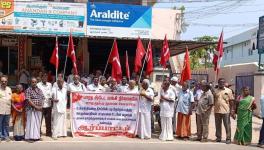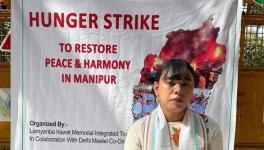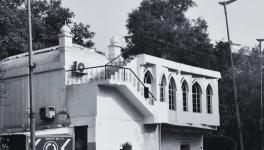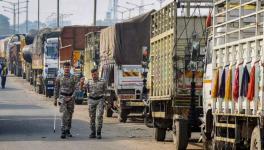Redevelopment of Central Vista: ‘Modi Govt’s Attempt to Erase Congress’s Legacy’
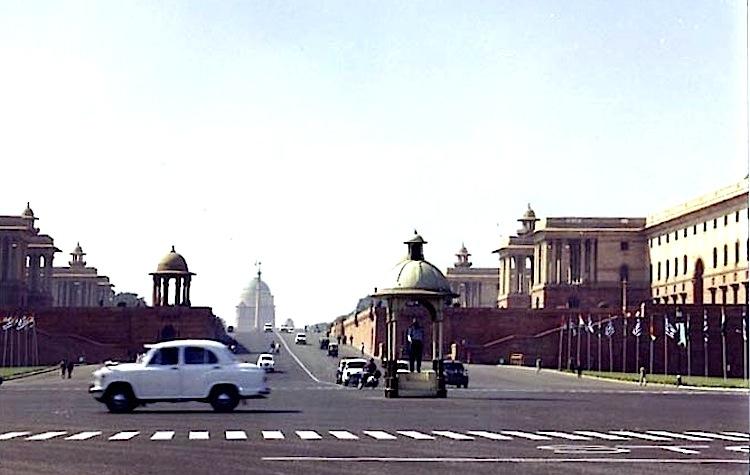
In early September, the Central Public Works Department under the Ministry of Housing and Urban Affairs issued a tender for appointment of a consultant for “Development/Redevelopment of Parliament Building, Common Central Secretariat and Central Vista”. Central Vista comprises several buildings like Shastri Bhawan, Udyog Bhawan, National Museum, National Archives of India and other iconic buildings which were built to accommodate ministries in post independent India.
Now, these buildings, as several news reports suggest, may be demolished or changed significantly to make way for new structures that will define a new capital. However, the report regarding demolishing Parliament and North and South Block were rebutted by the Minister of Urban Planning Hardeep Puri. The prime argument for introducing the redevelopment project is, consistent weakening of the iconic buildings and their inability to withstand the earthquakes. Similarly, it is anticipated that the present space in these buildings cannot accommodate the increasing number of parliamentarians after delimitation in 2026.
While few details about the redevelopment are out in public domain, much is still hidden beneath the veil. The criticism about the abrupt move to redevelop the entire historical area has come from many conservationists, architects and curators. They suggest that the project depicts the agenda of the new regime which wants to wash away the post-independent legacy, and its association with the Congress.
Also read: Adopt a Heritage: Shifting Government’s Responsibility onto Corporates
Well-known designer and curator Ram Rahman told NewsClick that Prime Minister Narendra Modi has a very disturbing history of erecting "grandiose" structures by stifling the dissent of the local people.
He said, “The development of central vista is not a harmless act but a political act that wants to wash away the post-independent legacy which has been particularly associated with Congress. But leaving this apart, I see a clear pattern where Modi, when he was Gujarat Chief Minister built projects stifling the voice of local population. For example, he built the Sabarmati River Front by acquiring large areas on the riverbanks. Now, we all know that Sabarmati is not a perennial river. It's a monsoon-based river which gets swollen during rainy season and contracts during winters. Since Modi wanted to build a river front replicating European rivers, he built a grandiose tank where the water from Narmada was stored to maintain the flow at the riverfront. It deprived all people who were living at the riverbanks. Another example was seen in Varanasi, where many houses were demolished to build the corridor from Vishwanath Temple to the banks of Ganga."
He added that the redevelopment project echoes a similar sentiment where no stakeholders including architects, historians and conservationists were taken into consideration. He said, “My basic reservation regarding the project is that the time frame has been limited to 2-3 years. This is completely crazy. British took 30 years to build the city. As far as rules are concerned, I see a complete disregard. They built the National War Memorial and I hardly remember any dialogue. The iconic Hall of Nations at Pragati Maidan was demolished despite the case being still heard in the Supreme Court."
Another conservationist A G K Menon has said that the project violates almost all guidelines for conservation. He wrote, “The concerns arise for three reasons. First, it violates the protocols of best practices for any interventions in heritage areas. The Lutyens Bungalow Zone (LBZ) and the Central Vista are widely admired worldwide and more specifically the Master Plan of Delhi has designated them as Heritage Zones to be protected. The bid document states that the bidder shall adhere to the “guidelines” of the LBZ and the Central Vista Committee (CVC), but what are these “guidelines”? In the past, developments have taken place in the LBZ area - but less in the CVC area - based on the discretionary powers of the government. This reveals that there are no objectively defined parameters in place to guide future development. Under the circumstances how can the concerns triggered by the bid document be allayed?”
“International protocols dictate that all interventions in a heritage area must be preceded by a State of Conservation or a Heritage Impact Assessment Report (HIA). Such reports define the parameters within which development should take place. In the absence of a HIA, the bid condition that the consultant will follow the “guidelines” of LBZ or CVC rings hollow," he further said.
Also watch: Hindutva's New Wave of Development - Kashi's Corporate Corridor
He added, “The massive scale and complexity of the projects envisaged, which are proposed to be completed before the next general elections, challenges one’s imagination. Further, to leave its planning, design and implementation to the advice of the successful bidder is certainly compounding the cause for concern. The bid document states that the government wants to build a legacy for the next 150 years, but the timeline proposed to complete the project does not support this objective."
Get the latest reports & analysis with people's perspective on Protests, movements & deep analytical videos, discussions of the current affairs in your Telegram app. Subscribe to NewsClick's Telegram channel & get Real-Time updates on stories, as they get published on our website.















